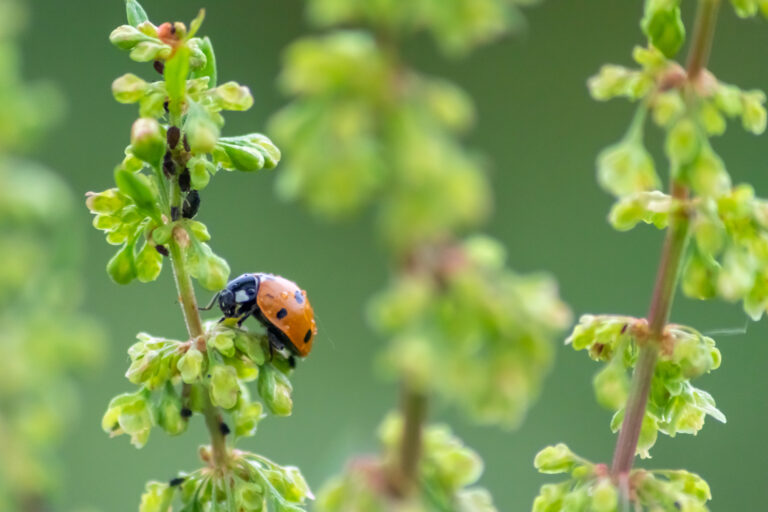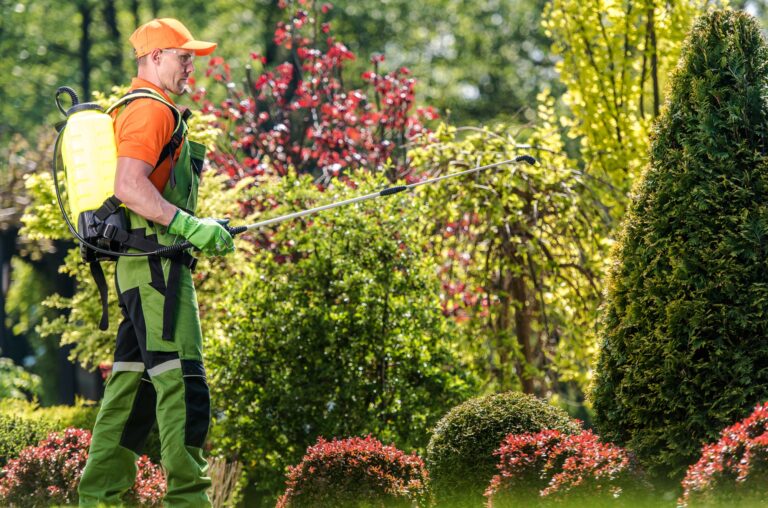Squash Vine Borer Control
I can’t even begin to tell you how many beautiful gourds I’ve had ruined by squash vine borers. Here, we’re going to explain to you what they are and offer some methods for trying to lesson the damage they cause.
Squash Vine Borers
These pests are the larvae of a type of moth that lays its eggs at the base of the plant. Once the larvae hatch, they burrow into the stem of the plant, where they feed on the plant’s tissues, causing wilting and death.
Squash vine borers are most commonly found in the eastern United States, but they can be found in other parts of the country as well. They are particularly fond of summer squash and pumpkins, but they can also attack other types of squash and gourds. The damage caused by squash vine borers can be devastating, often resulting in the death of the plant and a significant loss of yield.
There are several methods for controlling squash vine borers, including the use of insecticides, row covers, and crop rotation. However, prevention is often the best approach, and gardeners should take steps to avoid attracting the moths that lay the eggs. By understanding the life cycle of squash vine borers and taking appropriate measures to control them, gardeners can enjoy a bountiful harvest of squash and other cucurbits.
Understanding Squash Vine Borers
Life Cycle
Squash vine borers are a type of moth that lays their eggs on the stems of squash plants. The eggs hatch into larvae, which then burrow into the stem and feed on the plant’s tissues. The larvae grow rapidly, causing significant damage to the plant, and eventually pupate inside the stem. Adult moths emerge from the pupae and mate, starting the cycle over again.
Physical Characteristics
Adult squash vine borers are about 1 inch long with a wingspan of 1.5 inches. They have clear wings with brown veins and a metallic green or blue body. The larvae are white with a brown head and can grow up to 1.5 inches long. They have a distinctive “sawdust-like” frass that is often visible near the base of the plant.
Habitat
Squash vine borers are native to North America and are commonly found in the eastern United States. They prefer warm, humid climates and are most active during the summer months. They are attracted to squash plants, as well as other members of the cucurbit family, such as pumpkins and zucchini.
To prevent squash vine borers from damaging your plants, it is important to monitor them regularly and take action as soon as you notice any signs of infestation. This can include removing affected plant parts, applying insecticides, or using physical barriers such as row covers.
Impact on Squash Plants
Symptoms of Infestation
Squash vine borers are a common pest that can cause significant damage to squash plants. One of the earliest signs of infestation is the presence of small holes in the base of the plant stem. Adult moths lay their eggs at the base of the plant, and when the larvae hatch, they burrow into the stem, causing damage to the plant’s vascular system. As the larvae feed and grow, they create tunnels in the stem, which can weaken the plant and cause it to wilt.
Damage Caused
As the squash vine borer larvae continue to feed, they can cause significant damage to the plant. The tunnels they create in the stem can cause the plant to wilt and eventually die. In addition, the larvae can also feed on the plant’s leaves, causing them to turn brown and die. As the infestation progresses, the plant may become stunted and produce fewer fruits.
If left untreated, squash vine borers can cause significant damage to a squash plant and even kill it. However, there are several steps that can be taken to prevent and control infestations, including the use of row covers, crop rotation, and insecticides. By being vigilant and taking proactive measures, gardeners can protect their squash plants from the damaging effects of squash vine borers.
Prevention Strategies
Cultural Control
Cultural control methods are effective in preventing squash vine borers. Crop rotation is an excellent way to reduce the population of squash vine borers. It involves planting crops in different areas each year to avoid planting in the same spot twice in a row. This helps to reduce the chances of the pest surviving from year to year.
Another cultural control method is to remove any plant debris after the growing season. This helps to eliminate any hiding places for the squash vine borer larvae. Additionally, planting squash later in the season can help avoid the peak of the squash vine borer activity.
Biological Control
Biological control methods involve using natural enemies of the squash vine borer to control the pest population. One effective biological control method is the use of parasitic wasps. These wasps lay their eggs in the squash vine borer larvae, which then hatch and feed on the larvae.
Another effective biological control method is the use of nematodes. These are microscopic worms that feed on the squash vine borer larvae. However, it is important to note that these methods may not be as effective as chemical control methods and may require more time to see results.
In conclusion, prevention is key when it comes to controlling squash vine borers. By implementing cultural control methods, using pesticides responsibly, and utilizing biological control methods, gardeners can effectively manage squash vine borer populations and protect their crops.
Treatment Options
Manual Removal
One of the most effective ways to control squash vine borers is by manually removing the eggs, larvae, and pupae from the plant. This can be done by inspecting the base of the stem for any signs of infestation, such as sawdust-like frass or holes in the stem. If any are found, carefully cut open the stem with a sharp knife and remove the borer by hand. Be sure to dispose of the borer and any affected plant material away from the garden.
Insecticides
Insecticides can also be used to control squash vine borers. However, it is important to choose the right product and apply it correctly to avoid harming beneficial insects and pollinators. Products containing spinosad or neem oil are effective against squash vine borers and are safe to use in vegetable gardens. Follow the instructions on the label carefully and apply the insecticide when the borers are in their early stages of development.
Natural Predators
Encouraging natural predators, such as parasitic wasps and tachinid flies, can also help control squash vine borers. These insects lay their eggs on or near the squash vine borer eggs, larvae, or pupae, which then hatch and feed on the borer. Planting flowers that attract these beneficial insects, such as dill, parsley, and marigolds, can help increase their populations in the garden. Additionally, avoiding the use of broad-spectrum insecticides can help preserve these natural predators.






